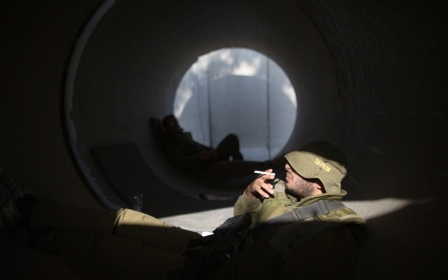Profile: Who were the three killed Hamas commanders?

The three Hamas military commanders killed early Thursday in southern Gaza are amongst the earliest generation of Qassam Brigade fighters. Here are more details about the three:
RAED AL-ATTAR
Born in 1974, Raed al-Attar joined Qassam Brigades in his early youth. Over the years, he has gained a reputation for building Hamas' military capacity and has become one of Hamas' top ranking leaders.
Since 1994, he has been on Israel's most wanted list and has accused him of being able to snap up Israeli soldiers, teaching Qassam Brigades soldiers Hebrew and drugging Israeli soldiers during military confrontations. Several assassination attempts have been made on his life, including repeated bombing of his home on several occasions. He has been known to change his locations and never stay in one place for long.
More recently, al-Attar is a member of the higher military council of Qassam Brigades and was the Rafah Division commander. He was also one of the founders of Hamas' elite commando unit, Nukhba.
He is best known within Gaza as the architect behind the Gilad Shalit prisoner exchange deal and kept Shalit in a secret place for five years in Gaza.
In a video showing al-Attar walking beside Shalit on the day the exchange deal happened, Israeli TV channel 2 said al-Attar was “sharp looking, quiet and ready to deal with any emergency, his eyes filled with determination and is wearing very modern clothes."
During the recent conflict, Israeli intelligence have accused al-Attar of knowing the whereabouts of Israeli soldier Hadar Goldin who was reportedly captured by Hamas during recent fighting and has been reported to be dead. As the commander of Rafah, al-Attar has also been accused of supplying weapons to Hamas through the smuggling tunnels underneath the border town.
He was married and a father of two children.
MOHAMMED ABU-SHAMALAH
Head of the Southern Division commander, Mohammed Abu-Shamalah is one of the most senior leaders in southern Gaza Strip and was in charge of overseeing the Rafah and Khan Younis area.
Born in 1973 in Rafah and married with five children, Abu-Shamalah is believed to have been the successor to Hamas' former second in command, Ahmed al-Jabari, killed during the eight-day Israeli offensive in November 2012. He is thought to be one of the founders of the Qassam Brigades and directs the fighting arm's strategies.
In the First Intifada, between 1987 and 1991, Abu-Shamalah was involved in chasing down alleged Israeli collaborators and planning resistance operations in different parts of Gaza.
In 1999, Palestinian Authority have issued execution orders against both Al-Attar and Abu-Shamalah, but massive demonstrations held after the orders were released were attributed with stopping the executions.
Abu-Shamalah worked with Al-Attar on the Shalit prisoner exchange deal.
Abu-Shamalah has been on Israel’s most wanted list since 1991 and has survived previous assassination attempts. One of the most high-profile attempts occurred in 2004 when Israeli troops surrendered his home and bombed it with explosives. In 2012, Israeli warplanes bombed his home again. A third home which he built in 2014 bombed by F16 missiles few weeks ago.
MOHAMMED BARHOUM
A close friend to al-Attar and Abu-Shamalah, Barhoum was Rafah Division senior commander. In 1992, he left the occupied Palestinian territories after being chased by Israeli intelligence. He has continued to travel secretly between different Arab states, but he returned during the Second Intifada to re-join the Qassam brigades.
Born in 1970 and married, Barhoum is not well-known in Gaza, but was nicknamed “the gray-haired man”.
New MEE newsletter: Jerusalem Dispatch
Sign up to get the latest insights and analysis on Israel-Palestine, alongside Turkey Unpacked and other MEE newsletters
Middle East Eye delivers independent and unrivalled coverage and analysis of the Middle East, North Africa and beyond. To learn more about republishing this content and the associated fees, please fill out this form. More about MEE can be found here.




